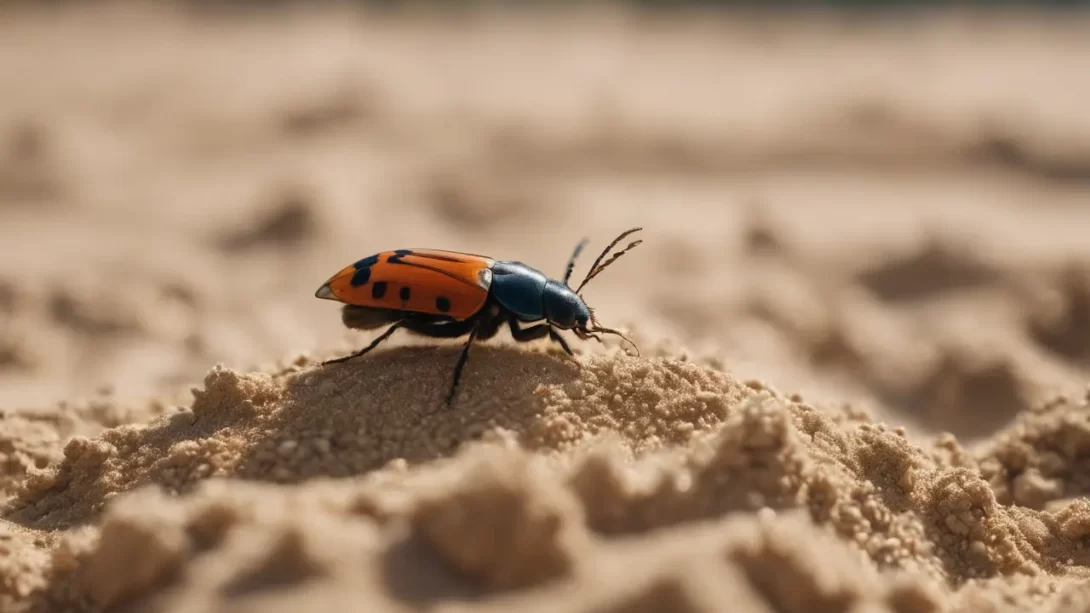Keeping sandboxes clean and safe is essential for ensuring a fun and healthy play environment for children. Sandboxes can unfortunately attract various types of bugs, ranging from harmless to those that can bite or sting. In this guide, we’ll explore effective, natural, and non-toxic methods to keep these unwanted guests at bay, ensuring your sandbox remains a delightful place for play and imagination.
Why Bugs Are Attracted to Sandboxes
Bugs are often drawn to sandboxes due to three main factors: moisture, food remnants, and the shelter they provide. Common sandbox intruders include ants, spiders, and beetles, each attracted for different reasons. Understanding these attractants is crucial in implementing effective strategies to keep them out.
Preventive Measures
Keeping the Sandbox Dry
Moisture is a major factor attracting bugs. To keep your sandbox dry:
- Ensure Proper Drainage: Make sure your sandbox has adequate drainage to prevent water accumulation.
- Use Sandbox Covers: Covers are essential not just for keeping out moisture but also leaves and debris. They should be used consistently, especially after playtime and before any rain.
Regular Cleaning and Maintenance
A clean sandbox is less inviting to bugs:
- Regular Cleaning Schedule: Establish and adhere to a regular cleaning schedule. This includes sifting the sand to remove debris and potential bug eggs.
- Remove Organic Material: Leaves, food scraps, and other organic materials should be removed promptly. These can attract bugs and also lead to mold and mildew.
- Safe Cleaning Products: If you choose to use cleaning products, ensure they are safe and non-toxic, keeping children’s health in mind.
Choosing the Right Sandbox Location
The location of your sandbox can significantly impact bug attraction:
- Sun Exposure: A sunny location can help keep the sandbox dry, as most bugs prefer moist environments.
- Distance from Plants: Placing the sandbox away from gardens or plant beds reduces the likelihood of bug migration into the sand.
Natural Repellents and Deterrents
Using natural methods to repel bugs is safer for children and the environment. These methods can be quite effective in maintaining a bug-free sandbox.
Non-Toxic Bug Repellents
- Homemade Repellents: Simple, homemade solutions like a mixture of vinegar and water can deter many types of bugs. These can be sprayed around the sandbox, not directly on the sand.
- Commercial Natural Repellents: There are also natural, commercially available repellents designed for use in children’s play areas. Always check the label for safety and application instructions.
Plant-Based Deterrents
Certain plants naturally repel bugs and can be strategically placed near the sandbox:
- List of Bug-Repelling Plants: Plants like lavender, mint, and lemon grass are known for their bug-repelling properties.
- Incorporating Plants: Plant these around your sandbox area, or use pots if you prefer a more flexible arrangement.
Additional Protective Measures
Using Protective Liners
A protective liner can be an effective barrier against bugs:
- Benefits of Liners: A weed barrier or mesh liner underneath the sandbox can prevent bugs from entering through the bottom.
- Installation Tips: Ensure the liner is properly installed and covers the entire bottom surface of the sandbox.
Sand Replacement and Treatment
Sometimes the best solution is to start fresh:
- When to Replace Sand: Generally, replacing sandbox sand every 1-2 years is a good practice, especially if bug infestations persist.
- Treating Sand: If replacement isn’t an option, consider treating the sand with a safe, non-toxic bug repellent. Be sure to thoroughly mix it and allow any fumes to dissipate before allowing children to play.
Monitoring and Ongoing Management
Vigilance is key in maintaining a bug-free sandbox. Regular checks and adjustments based on observations are crucial for effective bug control.
- Regular Inspections: Routinely inspect the sandbox for signs of bugs. Look for trails, nests, or an unusual amount of insects.
- Responding to Bug Presence: If you notice an increase in bug activity, assess and modify your prevention strategies. This might include more frequent cleaning, reapplying natural repellents, or adjusting the sandbox cover.
Engaging Children in Sandbox Care
Involving children in the care of their sandbox can be educational and effective:
- Educate About Cleanliness: Teach children to keep the sandbox clean, like not bringing food into it and picking up toys after play.
- Child-Friendly Maintenance Tasks: Assign simple tasks such as covering the sandbox or helping with the cleaning process.
Conclusion
Maintaining a bug-free sandbox is a combination of preventive measures, regular maintenance, and ongoing vigilance. By choosing the right location, employing natural repellents, and keeping the sandbox clean and dry, you can create a safe and enjoyable play environment. Remember, the key is consistency in care and being proactive in addressing any issues. With these strategies in place, children can enjoy countless hours of fun and imagination in their sandbox, free from the nuisance of bugs.



